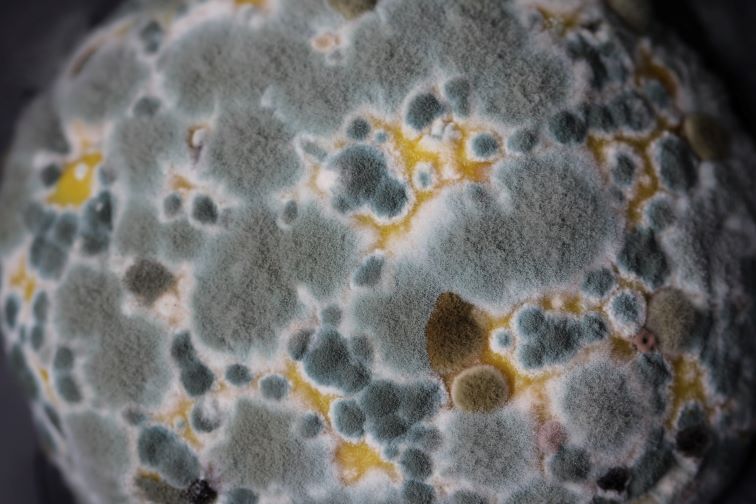Spring is officially here in Minnesota, and the spring weather isn’t far behind! The temps may still be dropping into the 30s and 40s on some days, but the sun is shining brightly and we can feel the excitement of warmer days coming. For many, they can also feel the telltale symptoms of spring allergies; sinus drainage, congestion, and coughing. One of the triggers to these (and many more) symptoms include environmental mold.
Molds are microscopic fungi with tiny spores which thrive on humidity and spread through air movement. Allergy to molds is quite common for children and adults, both indoors and outdoors. We commonly think of mold being in the shower, in the basement, or under the sink, but mold can grow just about anywhere.
Indoor and Outdoor Molds
When most people think of mold, they think of it growing on food or somewhere in doors. Indeed, there are 1,000 types of mold that can be found growing in your home. It can be found in drywall, in a leaky roof, in a moist basement, etc… but it can also be found outdoors, on top of your grass when the snow melts. Outdoor mold levels are highest after the snow melts in spring until the snow covers the ground in fall and winter. In addition, outdoor mold levels peak after rains, and as such are particularly high in September and October. Of course, it can then also be found on things that you bring inside from the outdoors. One study found that Christmas trees can breed mold, quietly releasing millions of spores into the room causing winter allergies and asthma attacks.
Classifications of Mold
Molds are classified by the effect they have on the human body. They are classified as allergenic, pathogenic, or toxigenic molds.
Allergenic Molds
Allergenic molds typically only cause problems for people who are predisposed to allergy to the specific mold, or who have asthma or other chronic respiratory illnesses.
Pathogenic Molds
Pathogenic molds can cause problems for those with a suppressed immune system, as they can cause an infection resembling bacterial pneumonia.
Toxigenic Molds
Toxigenic molds produce mycotoxins, which are toxic chemicals found in these types of molds. They can be absorbed into the body when one inhales them, eats them, or even touches them, leading to serious health effects. They have been tied to immunosuppression and cancer.
Five of the Most Common Indoor and Outdoor Molds
- Stachybotrys: Extremely toxic “black mold” that produces mycotoxins that can cause serious breathing difficulties, among other health problems. Can be found on wood or paper (cellulose products), but NOT on concrete, linoleum or tile.
- Penicillium: Very common species found on wallpaper, decaying fabrics, carpet, and fiberglass duct insulation. They are known causes of allergies and asthma and can secrete mycotoxins.
- Cladosporium: This very common outdoor fungus and can grow on textiles, wood, and other damp, porous materials. Often causes allergies.
- Alternaria: Commonly found in your nose, mouth, and upper respiratory tract and can cause allergic responses.
- Aspergillus: Often found in house dust and warm, extremely damp climates. Produces mycotoxins and can cause lung infections.
Issues Stemming from Mold Exposure
Mold illness is the variety of health problems that can occur from any type of mold exposure. Although a mold allergy is the most common problem caused by exposure to mold, mold can cause illness without an allergic reaction. Mold can also cause infections that can lead to a variety of problems from flu-like symptoms to skin infections and even pneumonia.
Mold toxicity is considered a chronic inflammatory response, where exposure to the interior environment of a water-damaged building can keep your body in a perpetual state of inflammation.
Common Signs of Mold Illness
- Brain Fog, Memory Problems, Trouble Focusing, Headaches
- Numbness and Tingling
- Asthma and Sinus Problems like Cough or Shortness of Breath
- Unexplained Muscle Cramping and Joint Pain.
- Digestive Issues like Change in Appetite, Diarrhea, Nausea, Abdominal Pain
- Fatigue and Weakness
- Light Sensitivity
- Tremors
- Night Sweats
Mold illness has often been described as a mimicker of Lyme Disease and Candida infections as the symptoms often overlap.
If you have chronic symptoms similar to the above and haven’t been able to figure out the cause, make sure to consider mold and whether it could be the perpetuator of your issues. To schedule an appointment with one of our practitioners, call 952-949-0676.





